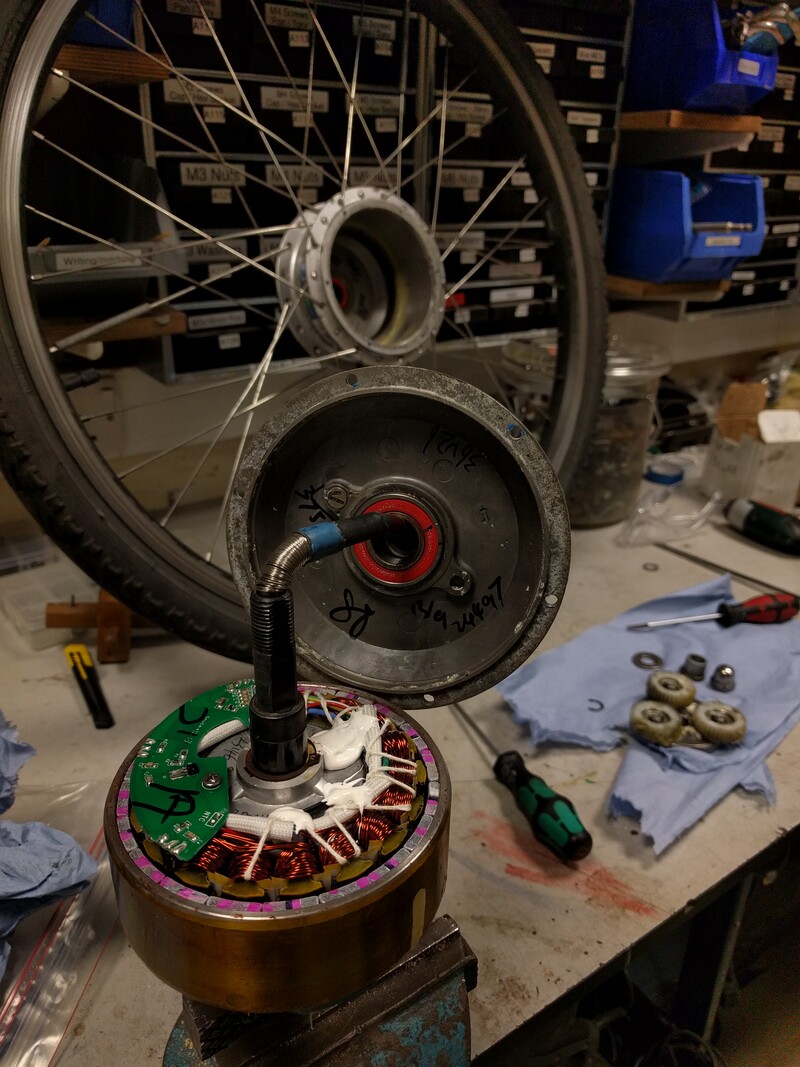From an article originally written around May 2021.

In 2021, Spokes - a local cycle campaigning group ran a writing competition: "Cycling in the Pandemic". Cicely wrote about our solar electric bike conversions during lockdown and I thought I would include the article here. I really like the solarpunk feel to making DIY small solar powered electric vehicles. The idea of being able to have a vehicle which moves thanks to the sun is amazingly futuristic.
All the pandemic cycling stories are here - there are lots of great stories in there that are worth reading.
It's hard to believe we were doing this almost five years ago.
Our story has its origins before lockdown. I have been cycling in Edinburgh for a number of years, but owing to trouble with RSI, my partner had not been able to join me. That was until he inherited an electric bike with a more wrist-friendly upright riding position. This enabled us to ride together, but presented a new problem - I couldn't keep up on my non-electric bike! So in 2019, I bought a conversion kit and we made my bike electric. For a battery we used some power-tool batteries we saw on special offer in our local supermarket. A friend made a holder for them and we placed them in a waterproof box on the rear pannier, leaving room to spare for transporting cake.
Then came the first lockdown and the order to stay at home. We imagined a world outside by watching videos of other people's cycling adventures, and discovered the epic solar powered Sun Trip from France to China. The spring sunshine beamed in through the windows of our flat as we worked. This got us thinking … could we too power our electric bicycles from the sun? In Edinburgh? Edinburgh, in Scotland? Clearly lockdown was making us think strange things.
We bought a small foldable 100 watt panel that we could store indoors and take out only when needed. The first results were disappointing; our panel only supplied a fraction of the power we needed. Maybe we had made a mistake and this was futile in Scotland after all. However, after some research, tinkering and more soldering we managed to increase the power to 92 watts. Success! One hour of sun time would give us about 7 miles of bike riding. Our dreams of riding on sunshine were now a reality.
We got into a lockdown rhythm of charging our batteries by day and riding at night when there were fewer people around. It was often so quiet that the only creatures we would see or hear would be foxes, owls, badgers or deer. The arrival of nature into the city was an unexpected but welcome balm at such a time.
A year later and we are still charging our bike batteries using our solar panel, having made some tweaks along the way. For example, we had to replace the batteries after they were damaged when our shed flooded during the severe thunderstorm in the summer.
While we've not been allowed to venture far during lockdown, learning about DIY bike conversion and the potential of renewables has been an adventure in itself. Encountering nature while travelling effortlessly up a hill knowing you're being powered by the sun is an amazing feeling, and it really feels like the future.
Technical things

Figure 1: Laboratory in a bike box: Electronic parts were very hard to find during Covid so we used scavenged connectors. The box provided an outdoor electronics workbench.
Note: These photos show experimental set-ups, which have since been tidied up. It is important that lithium batteries have correct battery management systems and fuses in place. All wiring should be secured as a bicycle has lots of vibration - wires can rub and chafe. An appropriate charging controller must be used.

Figure 2: The first untidy experiment: Bike energy and human (cake) energy.
Initially I used a 10w panel and a boost switching converter that I had in my electronic parts box, as things couldn't be easily bought during Covid. This took the ~19v from the solar panel and stepped it up to the 36-42v needed to charge the ebike battery. An adjustable current limit limits the charging current to a safe amount.
This was OK for a proof of concept and experimental purposes but could over-charge the battery if left unsupervised. Once the principle was proved a larger 100w panel and a commercial solar controller was later purchased, which has appropriate charging cut-offs.
For logging/monitoring I used an INA260 power monitor IC, wired with a resistor divider to let it handle the 42v ebike battery. We estimated that cycling using about 10Wh of energy per mile. A panel giving 90W of power therefore charges at 9 miles an hour - Measuring sun in what is traditionally a measure of speed seems weird!

Figure 3: Prototype power meter for solar logging experimentation
Since the article was written we've made the following improvements:
- Wired everything properly.
- Carrying the batteries in a box on the pannier rack turned out not to be great. The change in centre of gravity made the bike harder to ride, and so we moved the batteries onto the down tube.
- We converted an ebike for a friend by scavenging and repairing parts from other broken bikes. Stripping down and replacing the motor bearings was dirty, but fun.
